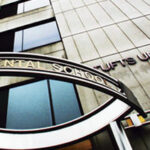The most vexing of dental ailments effects the muscles and joint that allow for the lower jaw to move. Patients present to their dentists and to specialists with a litany of complaints that require time and effort to resolve. Insurance does not usually cover the treatments which often adds financial pressure to frustration. The TMJ or Temporo-Mandibular Joint, allows the lower jaw (the mandible) to move up, down and sideways. Many factors can damage it. When that happens, the resulting situation is Temporo-Mandibular Joint Dysfunction Syndrome (TMD). While dentists usually refer to the joint as the TMJ and conditions effecting the TMJ as TMD, lay people may refer to the joint itself and problems effecting it by the initials TMJ.
The parts of the TMJ are the fossas, hollows in the skull just in front of each ear; the condyle, the rounded ends of the mandible that fit into the fossas; and the meniscus, pads cushioning and protecting the bones from rubbing together.
Disease and overuse may cause pain and impairment in any joint. Arthritis, connective tissue disease such as scleroderma and lupus erythematosis, and muscle stiffness cause pain and dysfunction. Eat a large sandwich quickly, chew beef jerky, or yawn widely, there may be repercussions.
There may be other symptoms, but pain is usually what brings the matter to the fore. Pain that may present as a mild to severe headache, tooth ache, or even neck aches.
Another symptom may be that the teeth no longer meet the way that they did before. It may seem that the front or back teeth do not touch. The jaw may lock open, or the jaw may not open fully. Any of these symptoms or a combination might bring a patient to the dental office.
The dentist will begin the appointment by asking the patient a battery of questions. When did you notice this problem? Is the pain constant, or intermittent? Is the pain different at different time of day? Does the pain change with posture (lying down versus standing)? Is there a change in the range of motion of your jaw? Where does the pain originate? Does the pain radiate to other parts of the body? A complete health questionnaire is important as many physical conditions, medications, and diseases effect joints, muscles, sinuses, and other structures.
The questions are very important. Answers help the dentist determine whether this is a problem with the jaw joint, muscles or even something else. Sometimes, heart pain can masquerade as jaw pain. The pain could be due to an ear infection or a dental infection.
The examination will continues by checking the range of motion of the mandible. How wide does the jaw open? About 1 ¾” is normal. Does the mandible open straight or does it shift to one side? Are there noises coming from the joints? Dentists refer to noises of the TMJ as clicking, popping and crepitus. The dentist will press and squeeze the muscles that control the jaw; dentists call these strong muscles the muscles of mastication. Normally, these muscles are comfortable under pressure. Sore muscles indicate that they are working too hard or working cross purposes with each other. Finally, the dentist examines the oral cavity, the mouth. How are the teeth? Is there gum disease? How do the teeth fit together? Are there signs of infection, cancer, or other disease?
Now that the dentist has all of the necessary information, the dentist can begin to figure out how to correct the problem. As with many things, simple treatments are often the best. Probably, the dentist will recommend that the patient rest the joint and the muscles by avoiding hard, crunchy or chewy foods. To decrease inflammation, take non-steroidal anti-inflammatory medications like ibuprofen and aspirin. The normal dose is not enough. Consult your dentist, physician or pharmacist to determine the right dose. Additionally, a dentist may prescribe a muscle relaxant. Most find that these first aid measures bring on relief quickly. Even so, continue resting the TMJ for a full week.
After a week of rest, TMD may resolve and the TMJ will return to normal. Often, rest is curative. Pain may not return, or the TMJ might stay pain free for years. Return to the dentist soon if the pain returns.
Definitive treatment for Temporo-Mandibular Joint Dysfunction becomes necessary for pain that does not respond to rest, is unrelenting, or returns frequently. Treatment includes creating an effective bite with removable devices, fixed and removable bridgework, or orthodontic braces. Many people find relief with massage therapy, chiropractic, biofeedback, and acupuncture. Dentists rarely recommend surgery.
If a meniscus (the soft pad that separates the fossa and the condyle) does not stay in place, there may be a click or pop as it changes position. A fully displaced meniscus may not cause a click or pop. However, the jaw may move to the same side as the displaced meniscus or lock open or closed. This may be a painful condition. The displaced meniscus may correct itself within days, or a dentist can reset the meniscus. Before and after resetting the meniscus, follow the first aid measures. If the condition does not improve or returns, contact your dentist.




